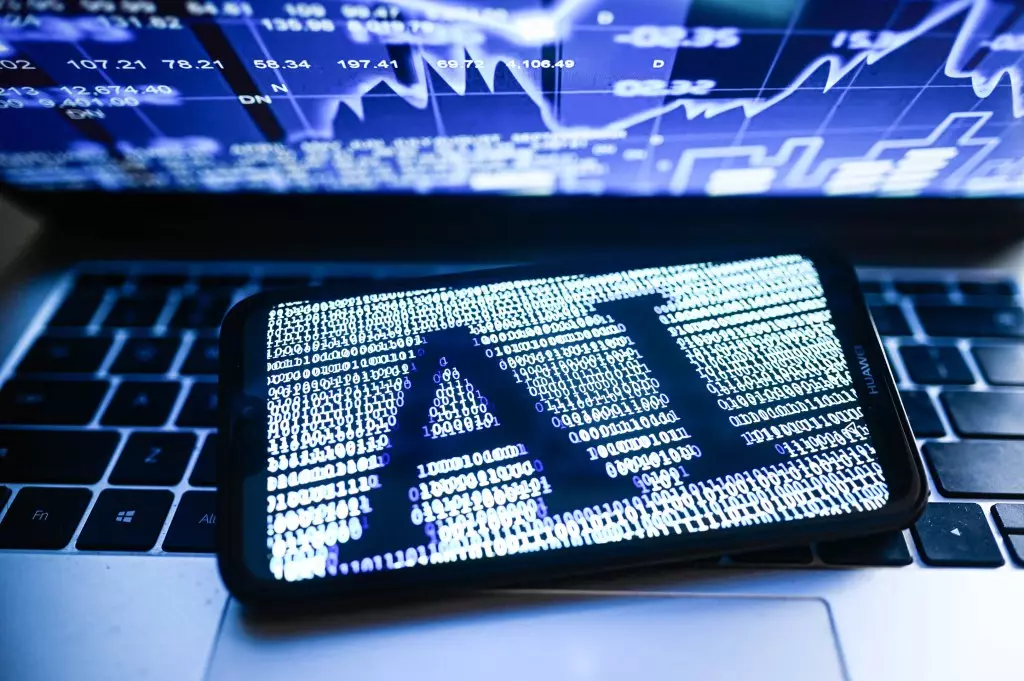The rapid advancement of artificial intelligence (AI) technology is creating an exhilarating yet precarious landscape for creative industries. As the Motion Picture Association (MPA) recently articulated in a ten-page comment to the White House Office of Science and Technology, the coexistence of AI and copyright protections remains crucial. The tension arises from the dual need to encourage innovation in AI while safeguarding the intellectual property rights of creators. This contradiction isn’t simply about policy; it’s a battleground where the future of cultural production and technological evolution will either thrive or falter.
The AI Conundrum: Invasion or Evolution?
At the heart of the debate lies the question: Is AI a friend or foe to creativity? Prominent stakeholders like Amazon Studios, Warner Bros., and Disney are vying for a system that permits AI to enhance human creativity without crippling the rights of those who create original works. They argue that the proliferation of AI-generated content should not come at the expense of respecting copyright laws that have long protected artistic expression. However, Big Tech companies like Google and OpenAI advocate for looser restrictions. They frame their lobbying as a national urgency, equating their competitive edge in AI development to national security.
This framing raises ethical questions. Should the line between innovation and exploitation be drawn based on market demands? Does protection of artistic integrity come second to economic growth? These conversations grow alarmingly high stakes when they come from powerful entities that can exert significant influence over public discourse.
The Struggle for Creative Identity
In the MPA’s articulate yet measured response, it recognizes the invaluable role of copyright law in fostering an environment where creativity can flourish. The organization’s president, Charlie Rivkin, emphasizes that innovation and copyright are not antithetical but rather complementary; one fuels the other. This assertion highlights a key point often overlooked in the AI discourse: the qualitative aspect of creativity itself. The old saying “garbage in, garbage out” holds true as AI systems rely on quality input to yield meaningful output. If creators are squeezed out by powerful AI corporations, the very essence of creativity may suffer a decline.
The pressure from Hollywood guilds, which have decried the MPA’s alleged inertia in defending creators’ rights, enhances the urgency of this struggle for identity. Various artists—including iconic figures like Sarah Silverman—are currently engaged in legal battles against AI giants that opportunistically use their copyrighted works for algorithm training. The industry’s insistence on maintaining the sanctity of intellectual property shows that, while the technological world evolves, artists are deeply concerned about preserving the core elements of their identity and livelihood.
Economic Implications: More Than Just Numbers
In contexts where technological advancement collides with creative integrity, the MPA’s comments underscore the significant economic implications of copyright. Copyright industries contribute over $2 trillion to the U.S. GDP, accounting for nearly 8% of the economy. Foreign sales of U.S. copyright products significantly outperform those of other major industries, showing that copyright protection is not merely a legal formality but an economic powerhouse. The skepticism around AI’s unchecked growth speaks to a broader narrative: innovation must not erode the economic structures built by human creativity.
While some advocate for the weakening of copyright laws to hasten AI advancements, the reality is that a flourishing creative economy relies heavily on protecting its intellectual resources. Prominent voices challenging the status quo argue that AI is not an existential threat but, rather, a tool that can expand creative possibilities if utilized responsibly. This outlook places value on a symbiotic relationship between human creators and AI rather than viewing them as adversaries.
AI in the Creative Process: Finding Common Ground
The MPA’s restrained comments advocate for a balanced approach. By suggesting that AI can enhance rather than replace human creativity, they offer a glimpse of potential harmony in this fraught discourse. Importantly, they cautioned against any mandatory disclosure of AI use in low-risk creative works, positing that such requirements might stifle innovation rather than encourage it. This perspective presents a critical opportunity for creators and technologists to come together in developing frameworks that cherish both originality and innovation.
In discussing the integration of AI technology into creative forms, the critical question remains: how can we build a system that respects the rights of creators while still allowing for AI’s transformative capabilities? The path forward will require nuanced dialogue, cooperation between tech companies and creative sectors, and the crafting of precise policies that address these multifaceted challenges. Only then can we hope to construct a sustainable relationship between human creativity and artificial intelligence that honors both the rights of creators and the promise of innovation.


Leave a Reply